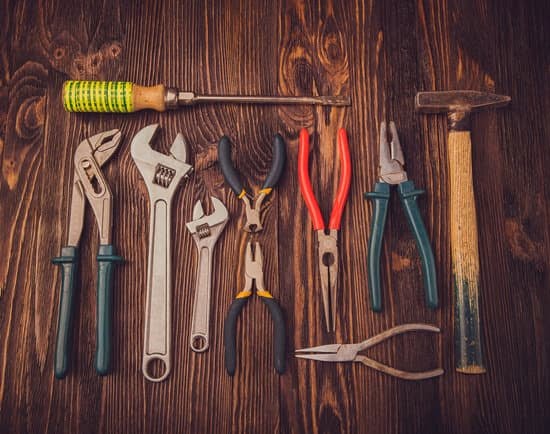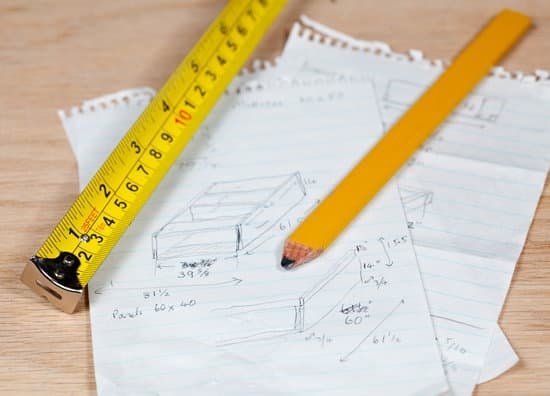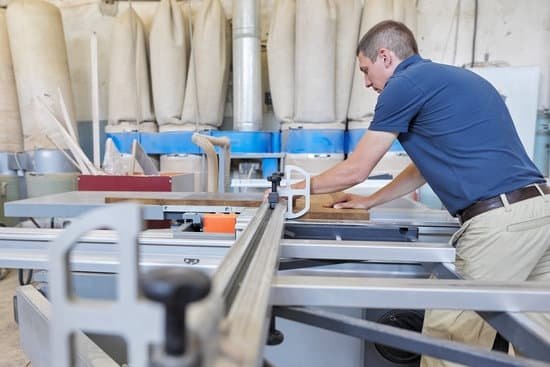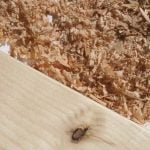What kind of screw should i use woodworking basics are essential to the success of any woodworking project. Using the right screws can make a significant difference in the overall strength, durability, and appearance of your finished piece. In this article, we will delve into the various aspects of choosing the correct screws for your woodworking projects.
One crucial aspect to consider when working on a woodworking project is the type of wood screws you use. Different types of screws serve different functions and have varying levels of strength and durability. Understanding the differences between screws like drywall screws, machine screws, and wood screws can help you make informed decisions in selecting the appropriate screw for your specific project.
In addition to considering the type of screw, it is equally important to choose the right size screw for your woodworking project. Factors such as the thickness of the material you are fastening, weight capacity requirements, and aesthetic preferences all play a role in determining the size of screw needed. By taking these factors into account, you can ensure that your project is not only structurally sound but also visually pleasing.
Types of Wood Screws
Wood screws are a crucial component in woodworking projects, as they help hold pieces of wood together securely. When it comes to choosing the right screw for your project, it’s important to consider factors such as the type of wood you’re working with, the weight load the screw will bear, and the aesthetics of the finished piece.
Understanding the different types of wood screws available can make a significant impact on the overall strength and durability of your project.
One common type of wood screw is the countersunk or flat head screw. These screws have a flat top that sits flush with the surface of the wood once it’s driven in. This type of screw is ideal for applications where you need the screw head to be hidden or where a smooth finish is desired.
On the other hand, round head screws have a rounded top that provides more surface area for bearing loads. These screws are often used in structural applications where strength is a priority.
Pan head screws are another option commonly used in woodworking projects. These screws have a slightly rounded top with a flat underside, making them suitable for attaching hardware or decorative elements to wooden surfaces. The choice between flat head, round head, or pan head screws ultimately depends on the specific requirements and design of your project. Remember to consider not only functionality but also visual appeal when selecting the appropriate type of screw for your woodworking endeavors.
Choosing the Right Size Screw
When it comes to woodworking projects, selecting the right size screw is crucial for the overall success and durability of your creation. The size of the screw not only affects how well the pieces of wood are held together but also plays a significant role in the overall structural integrity of the project.
So, what kind of screw should I use in woodworking basics? The answer lies in understanding the factors to consider when choosing the appropriate size screw for your specific woodworking project.
One important factor to consider when selecting the right size screw is the thickness of the wood being used. Thicker pieces of wood will require longer screws to ensure a secure fit, while thinner pieces may need shorter screws to avoid poking through the other side. It is crucial to measure the thickness of your wood accurately before purchasing screws to prevent any issues during assembly.
Another factor to keep in mind is the weight or load that will be placed on the joints secured by the screws. Heavier loads will require longer and thicker screws to provide adequate support and prevent any potential damage or breakage. Additionally, considering the type of material you are working with can also impact your choice of screw size. Softer woods may require shorter screws, while harder woods may need longer ones to penetrate effectively.
In summary, choosing the right size screw for your woodworking project involves considering factors such as wood thickness, load requirements, and material type. By taking these aspects into account and understanding what kind of screw should be used in woodworking basics, you can ensure a strong and durable final product that meets both your aesthetic and functional needs.
| Factors | Considerations |
|---|---|
| Wood Thickness | Thickness determines length needed |
| Weight/Load | Determine strength required for support |
| Material Type | Wood hardness affects penetration depth |
Head Styles of Screws
When it comes to woodworking projects, choosing the right screw is crucial for ensuring the strength and durability of your creations. An essential aspect to consider when selecting screws is the head style, as different head styles offer unique benefits depending on the type of project you are working on. Let’s explore some common head styles such as flat head, round head, and pan head screws and discuss their uses in woodworking.
Flat Head Screws
Flat head screws, also known as countersunk screws, have a flat top with a cone-shaped underside that allows them to sit flush or below the surface of the material. These screws are often used when you need a smooth finish and do not want the screw heads to protrude. Flat head screws are ideal for applications where aesthetics are important or when you need a secure connection without visible hardware.
Round Head Screws
Round head screws have a rounded top with a flat underside, making them more visible compared to flat head screws. These screws are versatile and can be used in various woodworking projects where a decorative touch is desired. Round head screws provide a clean finish while still offering strong holding power. They are commonly used in furniture assembly and other applications where appearance matters.
Pan Head Screws
Pan head screws have a slightly rounded top with a flat underside similar to round head screws but with higher sides that provide additional bearing surface. These screws are excellent for applications where you need extra holding strength or when working with soft materials that may require more support. Pan head screws are suitable for attaching hardware and brackets securely to wood surfaces, making them popular in cabinetry and construction projects.
Understanding the differences between flat head, round head, and pan head screws will help you choose the best option for your woodworking project based on both functional and aesthetic considerations. Each type of screw offers distinct advantages, so take into account your specific needs before deciding which one to use. Remember that using the right screw can make all the difference in ensuring the quality and longevity of your woodworking creations.
Thread Types
Woodworking projects often require the use of screws to hold pieces of wood together securely. However, knowing what kind of screw to use is crucial for the success and longevity of your project. When it comes to thread types, there are two main categories: coarse thread and fine thread screws. Understanding the differences between these two types and when to use each can make a significant difference in the outcome of your woodworking project.
Coarse thread screws have deeper and more widely spaced threads compared to fine thread screws. These types of screws are ideal for fastening pieces of wood together quickly and with less risk of splitting the wood.
They provide excellent grip and pulling strength, making them suitable for applications where security is crucial, such as framing or building workbenches. On the other hand, fine thread screws have shallower threads that are closely spaced together, providing better holding power in softer materials like particle board or plywood.
In determining whether to use coarse thread or fine thread screws for your woodworking project, consider the type of wood you are working with and the specific application. If you are working with hardwoods or dense woods that are prone to splitting, coarse thread screws are recommended due to their aggressive threading that can bite into the wood effectively.
Conversely, if you are working with softer woods or materials like MDF where a tighter grip is needed, fine thread screws may be a better choice. Understanding these distinctions can help you select the right screw for your woodworking project and ensure its success.
Material Considerations
Wood screws are an essential component of any woodworking project, and choosing the right material for your screws can greatly impact the strength and durability of your creation. The most common materials for wood screws are steel, stainless steel, and brass.
Steel screws are robust and suitable for most woodworking projects, while stainless steel is corrosion-resistant, making it ideal for outdoor projects or areas with high moisture levels. Brass screws offer a decorative touch and are often used in furniture making.
One important factor to consider when selecting the material for your wood screws is the environment in which your project will be placed. If your woodworking piece will be exposed to high humidity or temperature variations, stainless steel screws may be the best option to prevent rusting and corrosion over time. For indoor furniture or delicate woodworking projects, brass screws can add an elegant finishing touch while providing sturdy support.
It is also crucial to match the material of the screw with the material of the wood you are working with. For hardwoods like oak or maple, steel screws are recommended due to their strength. Softwoods like pine or cedar may benefit from stainless steel screws that resist staining from natural wood resins. Understanding how the material of the screw interacts with the type of wood you are using can ensure a secure connection that stands the test of time.
| Wood Screw Material | Best For |
|---|---|
| Steel | Most woodworking projects |
| Stainless Steel | Outdoor projects or high moisture environments |
| Brass | Furniture making or decorative touches |
Tools for Screwing
Woodworking projects often require the use of screws to join pieces of wood together securely. To ensure the success and longevity of your project, it is essential to choose the right screws and use them properly. However, in addition to selecting the appropriate type and size of screw, having the right tools for screwing is equally important. In this section, we will explore the essential tools needed for screwing in woodworking, including screwdrivers, drills, and impact drivers.
Screwdrivers
One of the most basic tools for screwing in woodworking is a good quality screwdriver. Screwdrivers come in various sizes and shapes to accommodate different types of screws and heads. It is crucial to match the size and type of your screwdriver with the corresponding screw to prevent stripping or damaging the screw head. Additionally, investing in a set of magnetic-tipped screwdrivers can make it easier to handle small screws and prevent them from getting lost during installation.
Drills
For larger woodworking projects or when working with hard woods, using a drill to pre-drill holes for your screws can save time and effort. Drills come in both corded and cordless varieties, each offering its advantages. Cordless drills provide more flexibility and maneuverability, while corded drills offer consistent power output for heavier-duty tasks. When choosing a drill for woodworking projects, look for one with variable speed settings and adjustable torque control to prevent over-tightening screws.
Impact Drivers
Impact drivers are powerful tools that provide high torque output to drive screws quickly and efficiently. They are particularly useful when working with long or thick screws that may be challenging to install manually with a traditional screwdriver or drill.
Impact drivers are designed to deliver repetitive rotational blows while driving in screws, making quick work of large projects or dense materials. When using an impact driver, be sure to select the appropriate bit size and type for your specific screws to avoid damaging them during installation.
By equipping yourself with the right tools for screwing in woodworking projects, you can ensure precise and secure connections between wood pieces while minimizing the risk of errors or damage. Whether you opt for traditional manual tools like screwdrivers or prefer powered options such as drills and impact drivers, having a well-rounded toolkit will enhance your overall woodworking experience and help you achieve professional-looking results every time.
Common Mistakes to Avoid
When embarking on a woodworking project, one of the most crucial aspects to consider is the type of screws you use. Choosing the correct screws can make a significant difference in the overall quality and durability of your project. However, there are common mistakes that woodworkers often make when it comes to screwing, which can compromise the integrity of their work. Here are some tips on avoiding these common screwing mistakes:
- Using the wrong screw size: One of the most common mistakes in woodworking is using screws that are either too long or too short for the task at hand. Using screws that are too short may not provide enough support, while using screws that are too long can split the wood. Be sure to carefully select the appropriate size screw for your project.
- Not pre-drilling holes: Failing to pre-drill pilot holes before inserting screws can lead to cracking or splitting of the wood. Pre-drilling helps ensure that the screws go in smoothly and securely without causing damage to the wood. Take the time to pre-drill holes for each screw to avoid this common mistake.
- Over-tightening screws: Another frequent mistake is over-tightening screws, which can strip the threads or even break the wood. It’s essential to tighten screws firmly but not excessively so that they hold everything together without causing harm. Use a torque-sensitive tool or gauge to ensure proper tightening.
Avoiding these common screwing mistakes can significantly impact the outcome of your woodworking project. By paying attention to details such as screw size, pre-drilling holes, and proper tightening, you can enhance the quality and longevity of your work. Remember that choosing the right screws and using them correctly is vital for achieving successful and durable results in woodworking projects.
When considering what kind of screw should I use woodworking basics, always think about how it will affect your overall project’s strength and stability. By understanding different types of wood screws, head styles, thread types, materials used, and avoiding common mistakes in screwing techniques, you’ll be well-equipped to tackle any woodworking project with confidence and precision.
Conclusion
In conclusion, choosing the right screws is crucial for the success and durability of your woodworking projects. Understanding the different types of wood screws, sizes, head styles, thread types, and materials will allow you to make informed decisions when selecting the appropriate screw for each task. Whether you are working on a small DIY project or a large-scale build, using the correct screws will ensure that your pieces are securely fastened and withstand the test of time.
While it may seem like a minor detail in woodworking, using the wrong type or size of screws can lead to structural issues and compromise the overall quality of your projects. By taking into account factors such as the weight-bearing capacity required, the type of wood being used, and any specific design considerations, you can make sure that your screws are up to the task.
Remembering to use tools like screwdrivers, drills, or impact drivers properly will also contribute to achieving professional-looking results in your woodworking endeavors.
In essence, paying attention to what kind of screw should be used in woodworking basics is fundamental for ensuring successful outcomes. By following the guidelines laid out in this article regarding types of screws, sizes, head styles, threads, materials, tools needed, and common mistakes to avoid, you’ll be well-equipped to tackle any woodworking project with confidence.
Investing time in understanding and selecting the right screws will not only enhance the aesthetics but also guarantee the structural integrity and longevity of your creations.
Frequently Asked Questions
What Screws Do I Need for Woodworking?
When it comes to woodworking, the type of screws you need will depend on the specific project you are working on. Generally, for basic woodworking projects like building furniture or cabinets, wood screws are commonly used due to their coarse threads that provide good holding power in wood.
What Are the 2 Common Types of Screws Used in Woodworking?
In woodworking, two common types of screws used are wood screws and drywall screws. Wood screws have aggressive threads and a tapered shank designed specifically for use in wood materials. Drywall screws, on the other hand, have fine threads and sharp points which make them suitable for attaching drywall to wood studs.
How Do I Know What Screws to Use?
Determining what screws to use in woodworking depends on various factors such as the type of wood being used, the thickness of the material, and the load-bearing requirements of the project. It is important to match the length and gauge of the screw to the thickness of the wood to ensure a secure connection.
Additionally, considering whether you need corrosion-resistant screws for outdoor projects is also crucial for longevity.

Hi everyone! I’m a woodworker and blogger, and this is my woodworking blog. In my blog, I share tips and tricks for woodworkers of all skill levels, as well as project ideas that you can try yourself.





